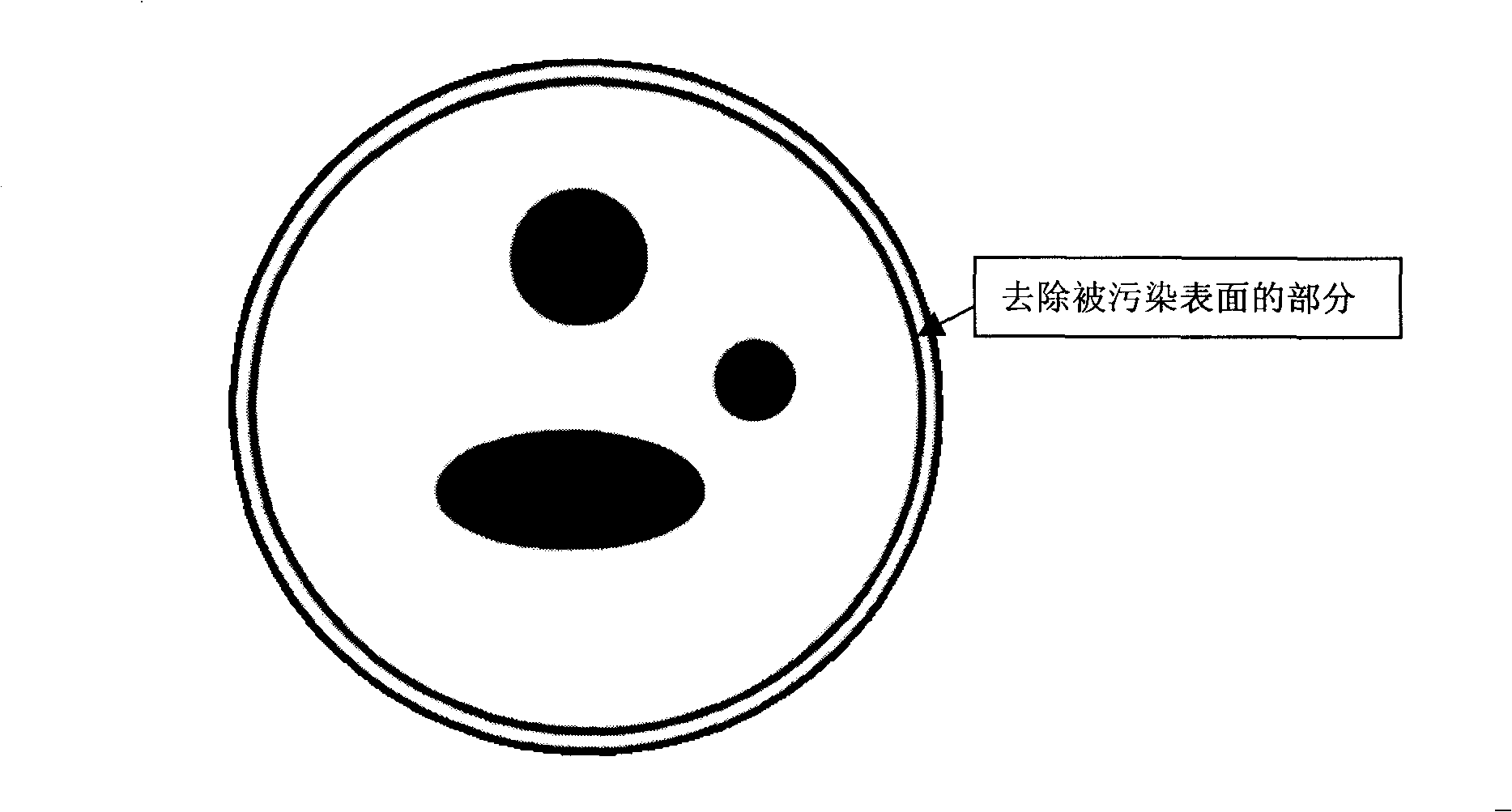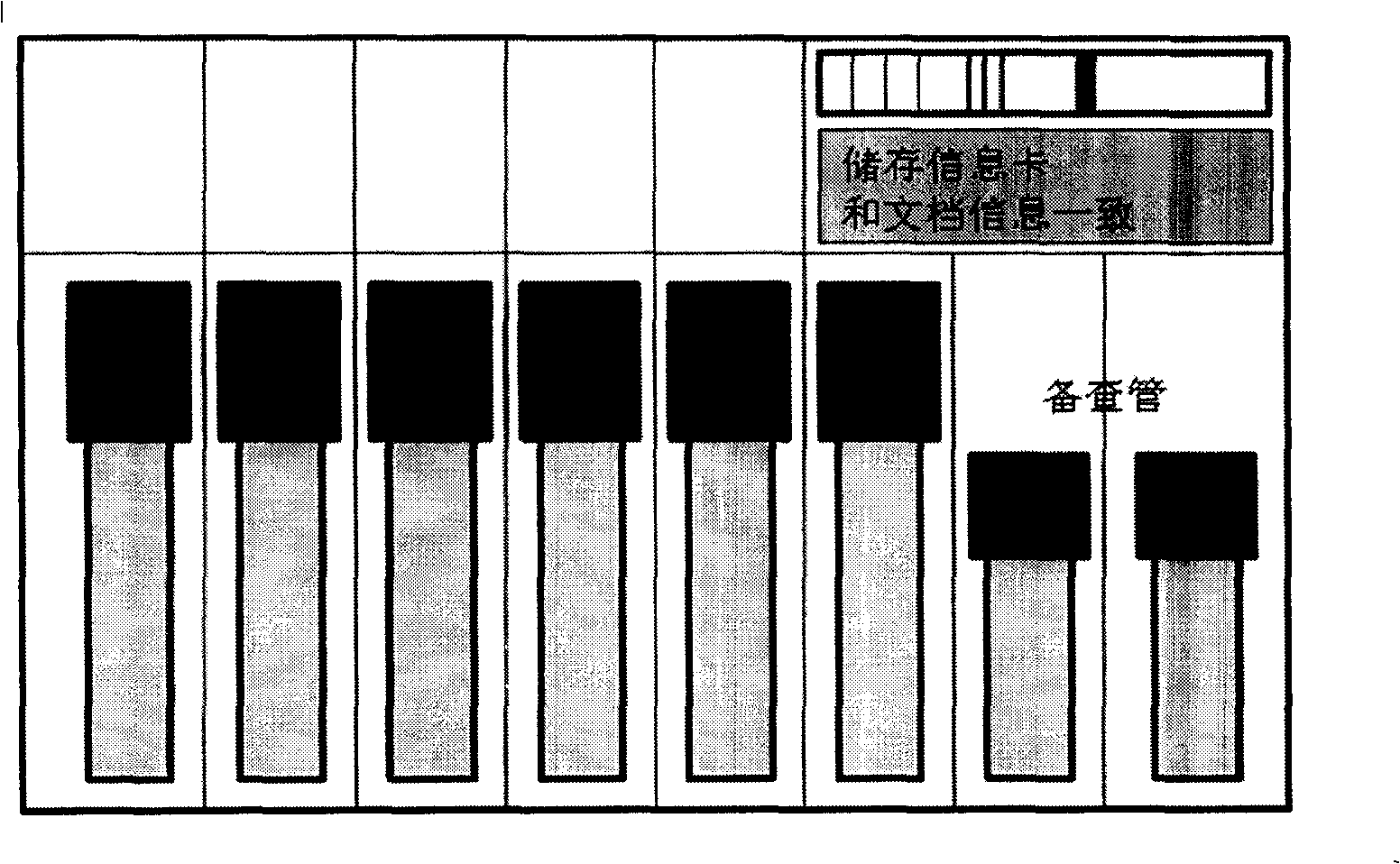Preparation, storage and use of umbilical cord and placenta mesenchymal stem cell for clinical therapy
A kind of stem cell and stem cell technology, applied in the field of umbilical cord placenta stem cells, can solve the problems of umbilical cord pollution, cross-contamination of other specimens, cross-contamination of liquid phase, etc., to achieve clinical application guarantee, save storage space, and avoid pollution effects
- Summary
- Abstract
- Description
- Claims
- Application Information
AI Technical Summary
Problems solved by technology
Method used
Image
Examples
Embodiment 1
[0036] Normal vaginal delivery placenta, decontamination of umbilical cord. Flush the placenta and umbilical cord with sterile saline to remove visible dirt and residual blood. Use 2% medical iodine for 30 seconds, then deiodine with 75% medical alcohol. The outer surface of the umbilical cord placenta was separated by hand about 0.5 mm. The outer surface does not touch the sterile inner tissue during removal. The stored individuals are routinely tested for tissue typing (HLA), biology, and pathogenic microorganisms. At the same time, we will establish databases for clinical umbilical cords and placental mesenchymal stem cells, and prepare data cards and barcodes that are consistent with the various types of cells stored, personal data databases, and various reports. Preparation and culture of mesenchymal stem cells.
[0037] Umbilical cord or placental tissue is processed to less than 1 mm in size using sterile manual, or automated methods. Centrifuge at 250g for 5 minut...
Embodiment 2
[0040]Normal vaginal delivery placenta, decontamination of umbilical cord. Flush the placenta and umbilical cord with sterile saline to remove visible dirt and residual blood. Use 2% medical iodine and 75% medical alcohol to treat the surface of the umbilical cord and placenta. According to the situation, about 0.5mm of the outer surface of the umbilical cord placenta was removed manually and with special instruments. The outer surface does not touch the sterile inner tissue during removal. The stored individuals are routinely tested for tissue matching (HLA), biology, and pathogenic microorganisms. At the same time, we will establish databases for clinical umbilical cords and placental mesenchymal stem cells, and prepare data cards and barcodes that are consistent with the various types of cells stored, personal data databases, and various reports. Preparation and culture of mesenchymal stem cells. Allows automated methods to process umbilical cord or placental tissue to ...
Embodiment 3
[0043] The placenta and umbilical cord were flushed with sterile saline containing penicillin and streptomycin to remove residual blood. With medical H 2 o 2 Quickly process placenta, umbilical cord surface. According to the situation, the outer surface of the umbilical cord placenta of about 0.5 mm is removed by manual separation or special equipment. The outer surface does not touch the sterile inner tissue during removal. The stored individuals are routinely tested for tissue typing (HLA), biology, and pathogenic microorganisms. At the same time, we will establish databases for clinical umbilical cords and placental mesenchymal stem cells, and prepare data cards and barcodes that are consistent with the various types of cells stored, personal data databases, and various reports.
[0044] Umbilical cord or placental tissue is processed to less than 1 mm in size using sterile manual, or automated methods. Tissue can further be processed to smaller particles using sterile...
PUM
 Login to View More
Login to View More Abstract
Description
Claims
Application Information
 Login to View More
Login to View More - Generate Ideas
- Intellectual Property
- Life Sciences
- Materials
- Tech Scout
- Unparalleled Data Quality
- Higher Quality Content
- 60% Fewer Hallucinations
Browse by: Latest US Patents, China's latest patents, Technical Efficacy Thesaurus, Application Domain, Technology Topic, Popular Technical Reports.
© 2025 PatSnap. All rights reserved.Legal|Privacy policy|Modern Slavery Act Transparency Statement|Sitemap|About US| Contact US: help@patsnap.com


